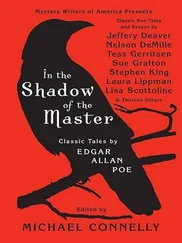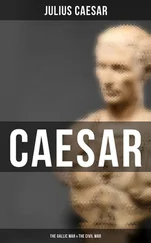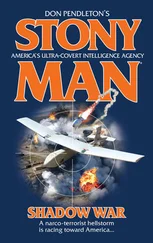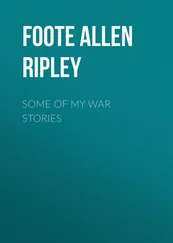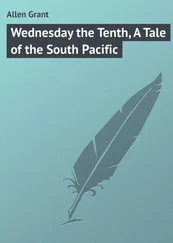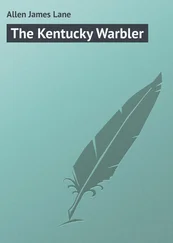Glen Allen - The shadow war
Здесь есть возможность читать онлайн «Glen Allen - The shadow war» весь текст электронной книги совершенно бесплатно (целиком полную версию без сокращений). В некоторых случаях можно слушать аудио, скачать через торрент в формате fb2 и присутствует краткое содержание. Жанр: Триллер, на английском языке. Описание произведения, (предисловие) а так же отзывы посетителей доступны на портале библиотеки ЛибКат.
- Название:The shadow war
- Автор:
- Жанр:
- Год:неизвестен
- ISBN:нет данных
- Рейтинг книги:5 / 5. Голосов: 1
-
Избранное:Добавить в избранное
- Отзывы:
-
Ваша оценка:
- 100
- 1
- 2
- 3
- 4
- 5
The shadow war: краткое содержание, описание и аннотация
Предлагаем к чтению аннотацию, описание, краткое содержание или предисловие (зависит от того, что написал сам автор книги «The shadow war»). Если вы не нашли необходимую информацию о книге — напишите в комментариях, мы постараемся отыскать её.
The shadow war — читать онлайн бесплатно полную книгу (весь текст) целиком
Ниже представлен текст книги, разбитый по страницам. Система сохранения места последней прочитанной страницы, позволяет с удобством читать онлайн бесплатно книгу «The shadow war», без необходимости каждый раз заново искать на чём Вы остановились. Поставьте закладку, и сможете в любой момент перейти на страницу, на которой закончили чтение.
Интервал:
Закладка:
After that, there was another curious scene of some group gathered at a stream in the act of baptism-but into what religion? And what was the historical event represented?
As the panorama moved into the nineteenth century, the scenes became more typical: a farmer plowing rolling fields of yellow wheat, railroad workers laying iron tracks, a miller driving his mules at an enormous grindstone. But in the center of them all was a scene depicting what appeared to be a college campus, with small figures of scholars in academic robes crossing its green squares of common; a campus that bore an uncanny resemblance to the Foundation's oldest buildings.
And then, moving into the Industrial Age, there were factory workers emerging from squat, gray buildings topped by busy smokestacks, steamboats on a wide river, long snakes of trains loaded with cattle and iron and coal… The only Native Americans here were small, indistinct figures perched on the top of hills, vaguely threatening.
As Benjamin continued to turn, he saw more groups of workers-miners, lumberjacks, blacksmiths, cowboys-always with their faces aglow with dedication and purpose, and always pointed toward the right of the mural, as though straining to see the final realization of the true America that lay just over the cloud-covered horizon.
Next, the mural's pale blue sky became crowned with airplanes-the Wright biplane, a tri-motor mail plane, even a flying boat-while down on the earth the factories multiplied, their halos of black smoke apparently indicating the building power of America's industrial might. And it was with this section of the mural, the last, that the faces became somewhat blanker, more generic and idealized. In one or two small scenes he saw what appeared to be strikers or protestors, with signs and torches-but always surrounding them were indistinct figures shrouded in a kind of gray fog…
Finally, the mural reached its near climax with the depiction of the building of a mighty skyscraper: steel girders were suspended in the air, while in the foreground a giant, blond-haired steelworker, stripped to the waist, gazed outward from the mural, directly into the viewer's eyes, as though challenging that viewer to put on some work gloves, climb into the painting, and join the great communal effort depicted there.
And there it ended. There still were another five feet of blank wall space. As Stoltz had said, Bayne hadn't completed it. Given the year he was working in, 1929, Benjamin wondered how on earth Bayne would have rendered the collapse of the American economic system-especially as so much of the mural seemed a tribute to America's economic stability and power-though in places he sensed a strange undercurrent to that tribute, as though it were all an immense parody. Benjamin noticed how, in the background, people seemed to coalesce out of the smoke and clouds and dust, as though the landscape itself was producing Americans.
Benjamin moved closer to make out these background figures, and he began to discern other details in the painting: smaller figures whose clothes and faces were clearly intended to represent historical personages: that was probably Lincoln, that was Edison, here was Teddy Roosevelt… But why were they in the background, as though they were unimportant, mere supporting characters in this historical theater?
And then one of these details caught his attention-a tiny, almost invisible mark which at first he took to be a mere shadow. He looked closer, and saw it was some sort of symbol, painted as though it were carved in the keystone of a granite gate over the entrance of what he took to be a Depression-era university. Then, when he looked back to the left, back in time, as it were, he saw it again. And then again.
After some careful searching, he found it on the architectural plans spread across a drafting table in the section about skyscrapers; again on an X-ray machine in a paean to what was obviously a modern clinic; again on one of the standards being carried by Union soldiers on the charge, the pennant almost obscured by the smoke of battle; then again, scrawled as though a doodle in the notebook of a woman student seated amidst other women students, in what was probably a women's finishing school of the early nineteenth century.
After further searching, he located the strange symbol again as a shaded area in the aura of light above the preacher in the woods where the mural began; in fact here it was most distinct, once one knew what to look for. And then, after poring over the odd tableau representing the signing of the Constitution, he found it yet again: very subtly set into the seal of a letter sitting on a table by the elbow of one of the anonymous delegates.
Benjamin stepped back, slightly out of breath, rubbing his eyes. With a little distance, these symbols and other details quickly melded into the overall complexity of the mural, and for a moment he wasn't even sure he'd seen it at all. These tiny, indistinct marks might easily be taken for mistakes of the brush, shadings, small details…
He looked again over that representation of the Continental Congress signing the Constitution. And now he realized the scene was meant to refer to John Trumbull's famous Declaration of Independence, though without the famous personages that populated that painting. It was as if the painter had replaced every famous delegate with a figure in the same posture and clothes, but a nondescript Everyman, without features or personality.
Except one.
He leaned in closer again, brought his face to within a few inches of the part of the scene depicting a particular seated delegate. The delegate's right elbow was propped on a small table, and upon that table was what looked like a group of letters. On one of those letters was a wax seal, and set into that seal-unless his eyes were playing tricks on him in the dim light-was that same symbol. Then he looked to the face of the delegate seated at that table.
He felt a chill spread down his back.
He quickly looked over his shoulder, saw that the foyer was empty. But for some reason he took small comfort in being unobserved.
After a last glance at the mural, Benjamin hurried up the staircase to find Wolfe as quickly as possible.
CHAPTER 22
When Benjamin got upstairs to Fletcher's room, he found Wolfe waiting for him there. Wolfe had Fletcher's computer set up on the small table, opened and turned on. There were lines of strange text displayed: words, but also mathematical formulae, lines, and symbols. Wolfe seemed frustrated and testy.
"What are you looking at?" Benjamin asked, seating himself and folding his arms on the books in his lap.
"One of the data files for Fletcher's program," Wolfe answered. "But it might as well be Sanskrit for all I can make of it." He looked at Benjamin. "I'm sorry," he said, rubbing his eyes.
"That's all right, we're both tired. What did Arthur say?"
"His first question was, as I expected, very telling. He wanted to know if we'd uncovered any evidence of Fletcher sharing his work with anyone outside the Foundation."
"And what did you tell him?"
"Well." Wolfe leaned back in the Chippendale chair, smiling. "I told him that it was entirely possible Dr. Fletcher had indeed leaked sensitive information to someone outside the Foundation's anointed circle."
"What?!" Benjamin nearly dropped the books. "Excuse me, but I was under the impression you didn't want anyone here to know what we were discovering. Not yet anyway."
Wolfe nodded. "Then your impression was as perceptive as usual, Benjamin."
"Then why-"
"I couldn't very well have said everything was hunky-dory with Fletcher's research, as that doesn't square with whatever Arthur already knows that he's not telling us. So I told him just enough of the truth to keep him interested and satisfied. For now."
Читать дальшеИнтервал:
Закладка:
Похожие книги на «The shadow war»
Представляем Вашему вниманию похожие книги на «The shadow war» списком для выбора. Мы отобрали схожую по названию и смыслу литературу в надежде предоставить читателям больше вариантов отыскать новые, интересные, ещё непрочитанные произведения.
Обсуждение, отзывы о книге «The shadow war» и просто собственные мнения читателей. Оставьте ваши комментарии, напишите, что Вы думаете о произведении, его смысле или главных героях. Укажите что конкретно понравилось, а что нет, и почему Вы так считаете.


